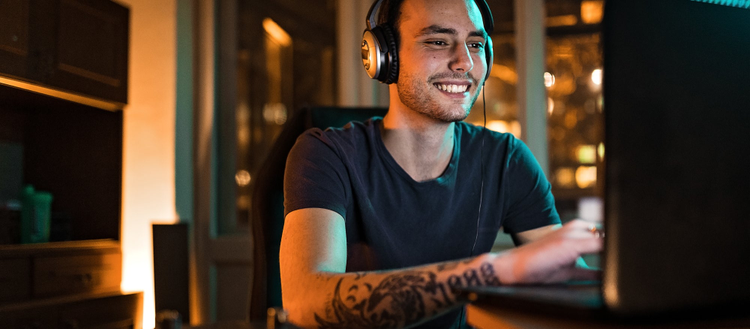Better films, no burnout: Producing better videos, faster

Creative professionals are very familiar with the phrase “controlled chaos.” As creatives, we bring a collective vision to life, and that’s difficult work. Wrangling stakeholders and cobbling together everyone’s ideas is a job in and of itself. And then, we still have to deliver top-notch creative on time and budget. That’s the chaos, and it’s up to us to control it.
Video production is one of the most complex creative workflows — it’s like creating a mosaic. You have to carefully piece together each step, from the first draft of the script to post-production. And a bad process makes that work infinitely more difficult. Far too often, our workflow gets compromised, forcing us to grind ourselves to a pulp.
Burnout is rising while the average tenure on creative teams is falling. So why do we just accept it when a project dissolves into a mess of destructive feedback and frustration? The truth is, bad processes are an avoidable occupational hazard. Our workflows are malleable — it takes time, but you can reshape existing practices. With focus and dedication (and the right tools), it is possible to build a process that works for both creatives and their collaborators.
I’m a producer by trade — my craft is process design. I help teams fix flawed workflows, and I’m sharing five of my best process design tips at Adobe MAX. But you don’t have to wait for my breakout session to make improvements. Here are a few things you can do now to fix a bad process and buoy team morale:
Simplify complex workflows with the right tools
Not long ago, creative work happened in the same room with the same people. Now our communication is increasingly fragmented. We chat over instant messaging, organize our work and teams with project management apps, and use collaboration apps to get our work done. And many of us feel like our work lives are spent on video conferences. Software can solve some of our pain points, but there’s a catch. If we keep adding apps without taking any away, our most important content becomes increasingly hard to find and collaboration gets lost in the mix of too many apps. This is especially true in the world of video production.
Last year, Dropbox assembled a small team to prototype a video collaboration tool called Dropbox Replay. We set out to build a single source of truth for video projects in this new distributed world. And I’m excited to share more about Replay and how it helps solve some of the challenges around video collaboration workflows at Adobe MAX.
Make it easier to work together — especially for distributed teams
Remote collaboration presents many unique challenges, like collecting feedback asynchronously. We aren’t in the same room anymore, so we can’t always ask clarifying questions. Instead, we need a process that’s more accessible and adaptable to distributed teams. And it starts with getting quality feedback at the right time.
You’ve probably heard the saying, “there’s no such thing as bad feedback.” Often that’s true, even if comments are overly prescriptive or difficult to implement. That’s not to say bad feedback doesn’t exist — late, unsolicited, conflicting, or vague comments can derail an entire project. But you can get better, more actionable feedback by enforcing the three T’s: type, time, and tone. I’ll go in-depth on this technique at Adobe MAX.
Of course, even the best feedback can present a challenge if you don’t have a way to collect and consolidate people’s comments. We used to gather in viewing rooms to watch and markup videos with our teams in real-time. Now we have to struggle with choppy video and audio lags over Zoom. Or provide feedback asynchronously, which makes it hard to discuss and clarify any issues. Dropbox Replay can help smooth out the process — I’ll show you how during my breakout session.
Centralize everything, so everyone is on the same page
Every creative knows a client or colleague that loves to ask, “Hey, where’s that thing?” Half the time, we’re not even sure ourselves. Did you Slack the file or send an email? Was it a file transfer — if so, what version got delivered?
Fragmented communication and scattered content add unnecessary confusion and frustration to any project. You could miss a critical comment. Or get stuck with unwanted edits because you can’t find the previous cut of a video. At the very least, chasing down assets will undoubtedly cost you time and frustration. That’s why it’s so important to have a single source of truth: you need to keep everything from scripts to feedback in a single place. Dropbox is a great way to consolidate all your assets. And, at Adobe MAX, I’ll share how Replay helps you keep track of progress during video production.
Iterate on previous processes to deliver better results next time
One other benefit of centralizing your content is the opportunity for retrospection. Your last video project is excellent reference material. It can help new collaborators learn the process. You’ll probably find some good ideas on how to improve workflow, too.
Retrospective meetings are a great tool. It’s not easy to revisit a project just as it’s wrapping up, but you’ll learn a lot about your team and process. I’ll take a closer look at the benefits of a retrospective during Adobe MAX.
I’ve seen creatives endure a lot of pain and frustration, but we can do better. We can improve our resiliency by designing processes with the same rigor we put into our creative work. Check out my session at Adobe MAX Better Films, No Burnout: Producing Better Videos, Faster for more tips to improve your video production workflow. And, if you’re interested in Dropbox Replay beta, sign up today.
This MAX post is sponsored by Dropbox.
Description
Get exclusive process design tips on how to simplify and streamline video production workflows and video collaboration processes using Dropbox.